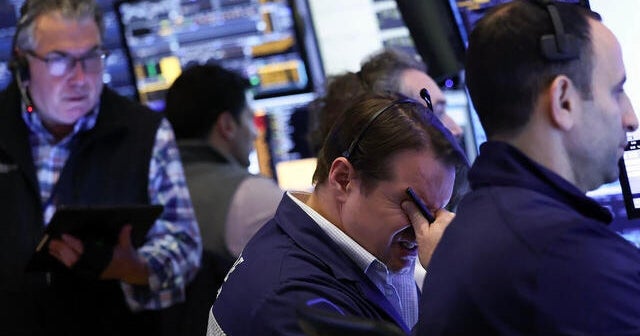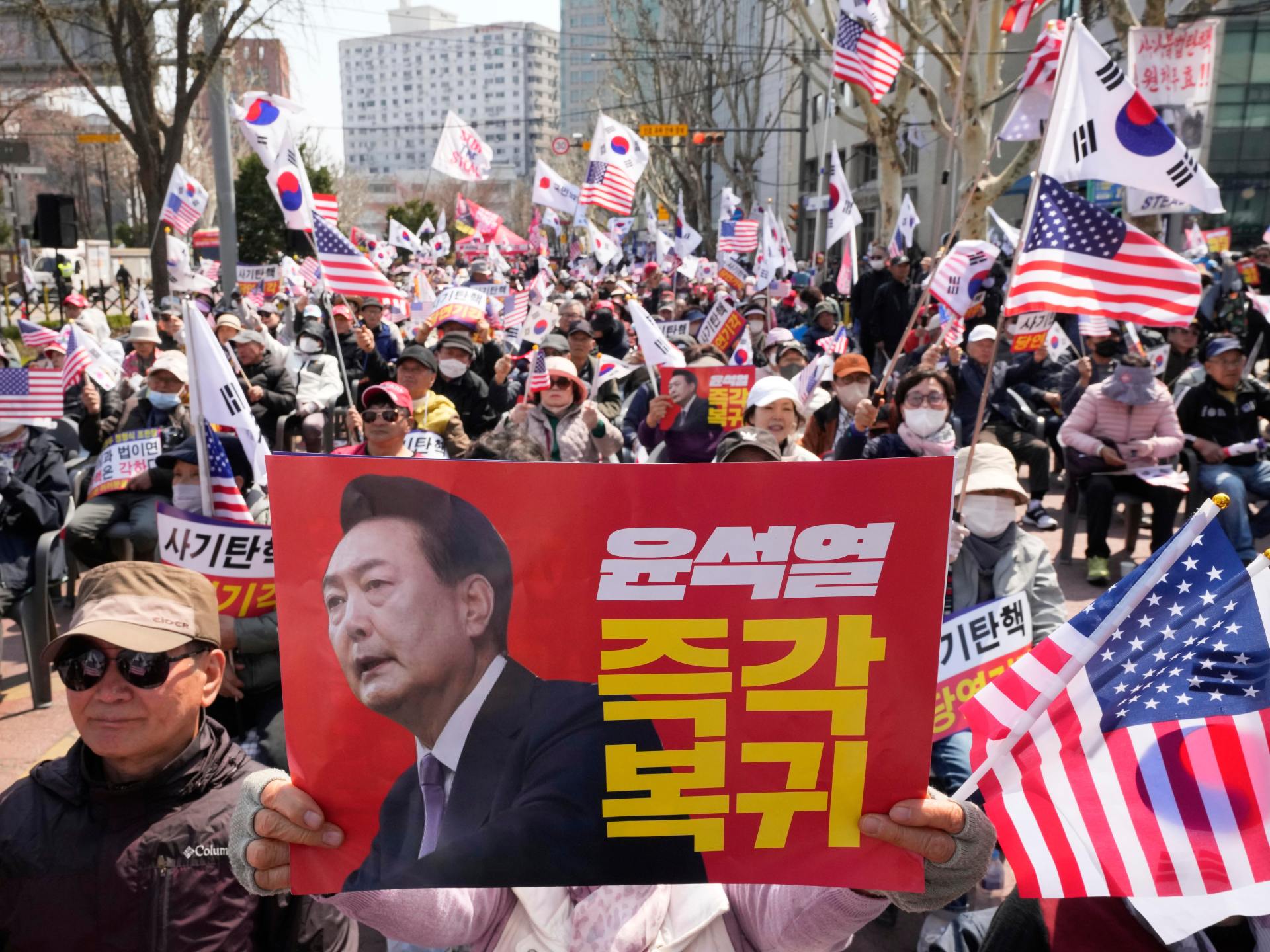Taiwan laptops, Italy wine, Indian frozen prawns, Vietnam’s Nike Sneakers and Irish butter.
These products are found in the Houses of the United States, a testimony to the lasting role of the United States as the champion of the free trade and its position as a most lucrative market for goods around the world.
They are now among the major categories of goods subject to additional taxes after President Trump on Wednesday, imposed on Wednesday universal rates To all United States commercial partners, as well as additional duties and heavy in 60 countries, he considered the « worst criminals » of unfair commercial practices.
In a sharp shift from the decades of trade policy, Trump instituted 10 percent of the base line on all goods imported to the United States. In addition, other nations will be charged an so -called reciprocal rate at an even higher rate next week.
For the European Union and China, the two major commercial partners in the United States, the White House imposed 20 percent and 34 percent rates. The additional tax in China will be added to a rate of 20 percent earlier imposed by Mr. Trump.
Even unlikely nearby allies such as Japan and South Korea were saved. Neither countries like Australia and Brazil buy more in America than they sell.
The announcement, which Mr. Trump had greeted as a « liberation day » of America, sent shock waves worldwide and raised the spectrum of a world trade war. Stock market markets He fell to the news, as investors were surprised by the size and extent of the rates.
In less than three months, Mr. Trump has spoke in Canada, Mexico and China along with imported steel, aluminum, cars and car pieces. The executive order included exemptions from semiconductors, pharmacists and wood on Wednesday. But analysts believe they are not reproach; They are products next to being objective.
Allies and opponents are going back to make sense of Mr. Trump’s tariff hut, which has raised import duties at his highest levels in more than a century and showed no sign of dependent. Some threatened to retaliate. Others openly pressed the negotiations, while some pushed the concessions quietly through the later channels.
China accused America of « unilateral bullying », committing to taking « opposing measures to safeguard its own rights and interests. » South Korea called an emergency group and pledged to « pour all government resources to overcome a commercial crisis. » In Brazil, the government of President Luiz Inácio Lula da Silva said he was evaluating retaliation measures.
In a morning address on Thursday, Ursula von der Leyen, President of the European Commission, said that the global economy will « massively suffer » from the rates. Although he was asking for negotiation, he said that the Bloc is preparing more measures, in addition to the retaliation rates that he had already prepared for the previous tax on foreign steel and aluminum.
Asia was especially affected by Mr. Trump’s plan. Vietnam, a beneficiary of the companies that move China’s production during the Trump’s first presidency, was at an amount of 46 percent. Taiwan, Thailand and Indonesia were covered with more than 30 percent. The White House put a 26 percent rate to India imports.
For decades, exports have served as a path to economic prosperity for developing Asian countries, which are derived from conflicts, crisis or poverty. The last punished countries such as Taiwan and Japan, which have managed to modernize their economies through trade, and also darkened the perspectives of poorest nations such as Cambodia and Bangladesh sought to follow this route.
Cambodia, a producer of clothing and footwear, was affected by a 49 percent rate. The United States is the largest export market in the country.
« As a small country, we just want to survive, » said Sok Eysan, a spokesman for the Cambodia governing party.
Trump has blamed the sale of cheap goods from these countries by departure from the manufacture sector of America. But they have also helped keep inflation at bay, reducing the prices of North -American consumers.
Sarang Sharidore, director of the world program of the Quincy Institute for Statecraft responsible for Washington, DC, said that the rates would affect various developing countries, while encouraging much of the world to move faster to an order without the United States in its center.
« When it comes to trade, we find a lot in a multipolar world and there are alternative markets. Although, of course, there will be pain costs and diversification transactions, » he said.
Anthony Albananese, the Prime Minister of Australia, said that his country would not respond to retaliation rates, which he pledged that Australia would not « join a race to the bottom of higher prices and slower growth. »
In Japan, officials and commercial experts were out of guard due to the size of the new rate that the country will face: 24 percent. It was particularly cradle, given the average Japan rate on non -agricultural goods is one of the lowest worldwide. Japan called the « extremely unfortunate » rate and pledged to continue looking for an exemption.
Prime Minister Shigeru Ishiba has pledged to increase Japanese investment to approximately $ 1 trillion, focusing on the purchase of more north -American products such as Liquefied Natural Gas.
Speaking before the last rates are announced, Takeshi Niinami, CEO of Sintory Holdings, a Japanese drinks giant known to the premium whiskey brands, said that he believed that rates could be negotiated because Japan is the largest foreign investor in the United States.
« A period of chaos can occur, » he said. « But ultimately, the situation will stabilize. »
Demit, a data analytics firm, estimated that Trump’s ads would result in $ 600 million in North -Americans a year. Most of the tax would come from ten countries, and Chinese exports represent a quarter of the additional rates to $ 149 million. Vietnamese goods would deal $ 63 billion, Taiwanese products $ 37 billion, and Japanese exports $ 36 million in rates. Combined German and Irish goods would face $ 41 billion in additional rates.
During Trump’s first presidency, technology companies moved some production to Vietnam to protect a possible trade war with China. One third of Vietnam exports are now electronic.
Apple It has moved to the manufacture of Airpods, watches and iPads in recent years in Vietnam. He also moved some iphone production to India, after years of relying exclusively on Chinese factories.
The southern conglomerate -Samsung Electronics has invested more than $ 20 billion in Vietnam since it started opening factories almost two decades ago. It now produces more products in Vietnam than China. Last year, it produced goods about $ 70 million in its Vietnamese factories, most for export.
Mr. Trump’s policies also complicate the decisions for the smallest -American smaller companies. Brenden McMorrow, co -founder of Move2play, a Toymaker based in Torrance, California, said that the company built all its products in China since it started a few years ago. But he began to consider the Vietnam or India factories to protect the Chinese import rates.
In Vietnam, it was found that Chinese companies that used China materials were not much cheaper. Instead, he decided to try a test of manufacture of one of his toys in India, a decision that Mr. McMorrow said it is best seen with the high rate imposed on Vietnam. He studied whether he could be manufactured in the United States, but said that the costs were approximately five times higher than those in China.
And despite the highest cost of the rates, now we do not see production as more viable.
« I don’t think it makes sense to invest in trying to make a lot of this manufacture in the United States if the next president comes in and only reverses the course on all these rates, then you will be in a terrible place, » he said. « It makes more sense just a kind of fixation where we currently manufacture and do not make great risky movements. »
Damien Cave, Jack Nicas, Victoria Kim, Alex Traveli, Choe Sang-Hun, Sui-lee week and David Pierson Contributed reports.














Leave a Reply